Piston Compressors: Types, Applications, and Selection for Industrial Environments
Table of Contents
Introduction to Piston Compressors
Piston compressors represent one of the most established and reliable technologies in the industrial pneumatics sector in the United States. These devices, also known as reciprocating compressors, form the backbone of numerous pneumatic systems in workshops, factories, and industrial environments throughout the country.
Unlike other technologies such as screw compressors or spiral compressors, piston compressors stand out for their robustness, versatility, and excellent value for money, making them a preferred option for many small and medium-scale industrial applications.
In this article, we'll explore in depth the different types of piston compressors, their specific applications in American industry, and the fundamental technical criteria for selecting the most suitable model according to the particular needs of each industrial environment.
Operating Principle
The operating principle of a piston compressor is based on a positive displacement mechanism, where air is compressed through the reciprocating movement of one or more pistons inside cylinders. This process can be divided into four main phases:
- Intake: The piston moves downward, creating a partial vacuum that allows air to enter through the intake valve.
- Compression: The piston rises, reducing the volume of the chamber and increasing the pressure of the contained air.
- Discharge: When the pressure reaches a certain value, the discharge valve opens, allowing the compressed air to exit toward the tank or system.
- Expansion: The piston begins to descend again, and the cycle repeats.
This seemingly simple system incorporates various technologies and components that ensure its efficiency and durability, such as specialized valves, cooling systems, lubrication mechanisms in oil models, and wear-resistant materials in cylinders and pistons.
The transmission of movement to the piston is generally accomplished through an electric motor connected to a crankshaft, although in specific applications, internal combustion engines may also be used, especially in combustion compressors for areas without access to the electrical grid.
Types of Piston Compressors
The category of piston compressors encompasses various subtypes, each with specific characteristics that make them more suitable for certain applications. Understanding these variants is essential for making an optimal selection.
Oil-Lubricated Compressors
Oil-lubricated compressors, such as Atlas Copco models from the Automan AF or LE Series, use oil to lubricate moving parts, reduce friction, and improve sealing between the piston and cylinder. These compressors are characterized by:
- Greater energy efficiency and volumetric performance
- Lower noise level during operation
- Longer service life of mechanical components
- Ability to work at higher pressures (up to 15-30 bar in industrial models)
- Better system cooling
However, they require more frequent maintenance, including periodic changes of oil and oil filters, as well as the installation of separation systems to prevent air contamination with oil particles when clean air is required.
Oil-Free Compressors
Oil-free compressors, such as the LF Series or LFX models from Atlas Copco, are designed to function without lubrication in the compression chamber, using self-lubricating materials or special technologies. Their main characteristics are:
- 100% oil-free air supply, ideal for applications requiring air purity
- Less maintenance in terms of oil and filter changes
- Perfect for industries such as food processing, pharmaceutical, electronics, or laboratories
- Lower risk of environmental contamination
As a trade-off, they tend to have a shorter service life, generate more noise, reach higher operating temperatures, and typically offer lower maximum pressures and flow rates than lubricated models of equivalent power.
Single and Multi-Stage Compressors
According to the number of compression stages, we find:
Single-Stage Compressors
These compress air in a single step, from atmospheric pressure to final pressure. They are simpler, more economical, and suitable for applications requiring moderate pressures (up to 8-10 bar) and intermittent use, such as in small workshops or domestic applications.
Two-Stage or Multi-Stage Compressors
These compress air in two or more sequential stages, with intermediate cooling. This allows:
- Achieving higher pressures (10-40 bar) with greater energy efficiency
- Reducing air temperature during compression, improving reliability
- Increasing the compressor's service life in continuous use applications
- Achieving greater overall volumetric performance
Multi-stage compressors are the preferred option for industrial environments with high compressed air demands or requiring pressures above standard levels.
Other Specialized Types
In addition to the above classifications, there are specialized variants such as:
- Diaphragm piston compressors: These use a flexible membrane to completely separate the piston from the air, ensuring total absence of contamination.
- Hermetic piston compressors: Primarily used in refrigeration, with the motor and compressor sealed in the same housing.
- Combustion compressors: Powered by gasoline or diesel engines, ideal for areas without access to electricity or mobile applications.
- Variable frequency drive piston compressors: These incorporate variable speed technology to adapt air production to actual demand, improving energy efficiency.
Key Takeaways: Types of Piston Compressors
- Oil-lubricated compressors offer greater efficiency and durability but require more maintenance.
- Oil-free models are ideal for applications demanding pure air, such as the food industry.
- Multi-stage compressors provide higher pressure and efficiency for intensive industrial uses.
- Specialized variants exist for specific needs such as portability or total absence of contamination.
Industrial Applications
Piston compressors find applications in numerous American industrial sectors, adapting to different needs according to their specific characteristics:
Automotive and Mechanical Workshops
In small and medium mechanical workshops, piston compressors are the predominant option for powering pneumatic tools such as impact wrenches, pneumatic screwdrivers, drills, grinders, and painting systems. Their ability to provide high pressure peaks makes them ideal for tools requiring instantaneous force.
Small and Medium Manufacturing
In small to medium-sized factories, these compressors supply air for pneumatic control systems, pneumatic actuators, valves, and other automation components. Two-stage models with higher power are common in these installations.
Food and Pharmaceutical Industry
Sectors requiring contaminant-free air opt for oil-free piston compressors, especially in applications such as:
- Food and beverage packaging and bottling
- Pneumatic transport of food products
- Compressed air cleaning of surfaces in contact with food
- Actuation of valves and actuators in aseptic areas
Construction
In the construction sector, piston compressors, especially portable ones with combustion engines, are used to power pneumatic hammers, plastering guns, projection systems, and other pneumatic tools at construction sites where there is no access to the electrical grid.
Dental and Medical Sector
Dental clinics and certain medical environments use small oil-free piston compressors for dental equipment, medical instruments, and breathing systems where air purity is critical.
Marine and Offshore Industry
In marine environments, robust piston compressors, often with anti-corrosion protection, are used for engine starting systems, pneumatic tools, and control equipment on board.
Selection Criteria
Choosing the right piston compressor for a specific industrial application should be based on various technical and operational factors:
Calculating Air Requirements
The first step is to precisely determine:
- Required flow rate (l/min or CFM): Sum of the consumption of all tools or equipment that will operate simultaneously, plus a safety margin of 30-50%.
- Required pressure (PSI): Determined by the equipment needing the highest working pressure, also considering losses in the installation.
- Duty cycle: Percentage of time the compressor will be operating (a determining factor for choosing between models for intermittent or continuous use).
Technical Factors
Once the basic needs are established, it's important to consider:
Motor Power
Expressed in HP or kW, it must be sufficient to provide the required flow rate and pressure. As a general rule, approximately 7-8 kW is needed to produce 1 m³/min at 7 bar (about 35 CFM at 100 PSI) in standard efficiency piston compressors.
Tank Volume
A larger tank allows:
- Meeting demand peaks without overexerting the compressor
- Reducing the frequency of start-stop cycles, extending the motor's life
- Improving condensate removal and air cooling
For industrial uses, tanks of at least 25-130 gallons are recommended, depending on consumption.
Number of Stages
As a guideline:
- For pressures up to 115-145 PSI: single-stage compressors
- For pressures of 145-215 PSI: two-stage compressors
- For pressures above 215 PSI: multi-stage compressors
Lubrication Type
The decision between oil-lubricated or oil-free compressors will depend on:
- Air purity requirements
- Availability for regular maintenance
- Expected duty cycle
- Available budget (oil-free models are usually more expensive initially)
Operational
Operational and Environmental Factors
Electrical Supply
It's essential to verify compatibility with the available electrical installation:
- Single-phase (120V/230V): Generally for compressors up to 3-4 HP
- Three-phase (208V/230V/460V): For higher power compressors
- Starting current: May require special protections in the installation
Noise Level
Expressed in dB(A), it's especially relevant in environments where people work. Piston compressors typically generate between 70-90 dB(A), although soundproofed versions exist that reduce these levels.
Environmental Conditions
Factors such as ambient temperature, humidity, altitude, or the presence of dust can significantly affect performance. For example:
- High temperatures reduce compression efficiency
- Altitude decreases air density and, therefore, performance
- Dusty environments require additional filtration at the intake
Available Space and Installation
Consider:
- Equipment dimensions and space for maintenance
- Adequate ventilation for cooling
- Appropriate foundation or support to reduce vibrations
- Accessibility for maintenance
Key Takeaways: Selection of Piston Compressors
- Calculate the flow rate by adding the consumption of all simultaneous tools plus a 30-50% margin.
- Choose single-stage compressors for pressures up to 145 PSI and two-stage for higher pressures.
- Consider oil-free compressors for applications requiring pure air (food, pharmaceutical).
- Verify electrical compatibility, especially in high-power compressors.
Maintenance and Care
Proper maintenance is essential to ensure reliability, efficiency, and longevity of piston compressors. Below are the main maintenance tasks according to their frequency:
Daily Maintenance
- Check oil level (in lubricated models)
- Drain condensate from the tank and separators
- Verify the operation of the pressure switch and safety valves
- Check for possible air or oil leaks
Weekly Maintenance
- Clean or replace the air intake filter
- Check the tension of the transmission belts
- Verify the operation of cooling systems
- Clean the cooling fins of the head
Quarterly Maintenance
- Check the tightness of all screws and connections
- Verify the condition of intake and discharge valves
- Check the operation of gauges and control devices
- Inspect the condition of pipes and connections
Annual Maintenance or Based on Operating Hours
- Change the compressor oil (in lubricated models)
- Replace oil filters and air filter cartridges
- Review and, if necessary, replace separators
- Check the condition of bearings and moving elements
- Verify the calibration of safety systems
- Inspect the condition of the tank (corrosion, deformations)
Additional Recommendations
To maximize the service life and performance of the compressor:
- Install the compressor in a clean, dry, and well-ventilated place
- Maintain an adequate ambient temperature (ideally between 40°F and 100°F)
- Use specific oils recommended by the manufacturer
- Install appropriate air treatment systems (filters, dryers, separators) according to the application
- Respect the recommended duty cycles to avoid overheating
- Perform proper break-in on new compressors, following the manufacturer's instructions
- Maintain a detailed record of maintenance operations performed
Regulations and Safety
In the United States, the installation and operation of piston compressors are subject to various regulations that ensure safety and compliance with technical standards:
Applicable Regulations
- OSHA 29 CFR 1910.169: Air Receivers - Covers safety requirements for compressed air equipment
- ASME Boiler and Pressure Vessel Code Section VIII: Rules for construction of pressure vessels
- ANSI/ISA-7.0.01: Quality Standard for Instrument Air
- UL 1450: Motor-Operated Air Compressors, Vacuum Pumps, and Painting Equipment
- OSHA 29 CFR 1910.95: Occupational noise exposure standards
Safety Requirements
The main safety aspects to consider include:
Mandatory Safety Devices
- Safety valves: Calibrated to open if pressure exceeds the maximum allowable limit
- Pressure switches: For automatic start and stop control
- Pressure gauges: For constant indication of working pressure
- Emergency stop devices: Accessible and clearly identifiable
- Guards for moving elements: Covers for pulleys, belts, and flywheels
Periodic Inspections
According to OSHA and ASME requirements, compressed air tanks must undergo:
- External visual inspection: Recommended annually
- Comprehensive inspection: Including thickness testing and operational checks
- Hydrostatic testing: When required by the inspector or after major repairs
These inspections should be performed by qualified personnel and properly documented.
Safe Installation
Key aspects for safe installation:
- Location in spaces with adequate ventilation
- Minimum distances to walls and obstacles for cooling
- Electrical installation in compliance with the National Electrical Code (NEC)
- Noise and vibration reduction systems
- Clear and visible safety signage
- Accessibility for maintenance and emergencies
Advantages and Disadvantages
Piston compressors present a series of advantages and disadvantages that should be evaluated according to each specific application:
Advantages
- Moderate initial investment: Generally more economical than equivalent technologies like screw compressors.
- Excellent high-pressure performance: Ability to efficiently generate high pressures.
- Simple maintenance: Mechanical components are accessible and easy to maintain with basic knowledge.
- Robustness and durability: Proven design with decades of experience that ensures reliability in adverse conditions.
- Versatility: Wide range of sizes and configurations adaptable to multiple applications.
- Good performance with variable loads: Ability to respond effectively to fluctuating air demands.
- Simple startup: Do not require complex starting systems in most cases.
- Operation at low temperatures: Greater tolerance to cold environments than other technologies.
Disadvantages
- Higher noise level: Generally louder than rotary or screw compressors.
- Intermittent operation: Most are designed for limited duty cycles, not for 24/7 continuous operation.
- Lower energy efficiency: In high-flow applications, they consume more energy per cubic foot of air produced than other technologies.
- Vibrations: Require adequate damping systems to prevent transmission of vibrations.
- Heat generated: Produce more heat during compression, requiring better ventilation.
- Oil content in the air: In lubricated models, they require additional filtration systems for applications demanding very clean air.
- Size and weight: Generally more bulky and heavy than compressors of other technologies for the same capacity.
Key Takeaways: Advantages and Disadvantages
- Piston compressors offer excellent high-pressure performance with moderate initial investment.
- They are ideal for intermittent uses and applications requiring high pressures.
- Their main limitations are noise, vibrations, and lower efficiency for continuous operation.
- The choice between piston or other technologies should be based on the specific usage profile and available budget.
Frequently Asked Questions about Piston Compressors
Conclusion
Piston compressors continue to be a fundamental solution in the American industrial pneumatic landscape, offering a balanced combination of reliability, versatility, and accessible cost that makes them ideal for numerous applications.
The key to maximizing the advantages of these devices lies in proper selection based on the actual needs of the application, considering factors such as pressure, flow rate, duty cycle, and required air quality. Equally important is implementing a rigorous maintenance program that ensures optimal operation and extends service life.
At Pneumatig, we offer a wide range of high-quality piston compressors, with models adapted to the diverse needs of American industry, from small workshops to demanding industrial applications. Our specialists are available to advise you in selecting the most suitable equipment for your specific needs, ensuring the best value for money and reliable technical service.

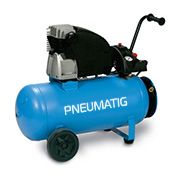
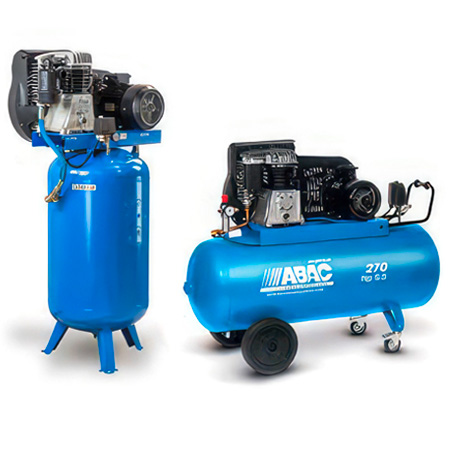
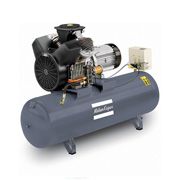
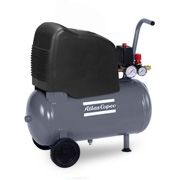
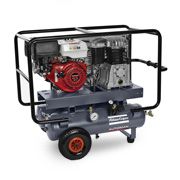
Login and Registration Form